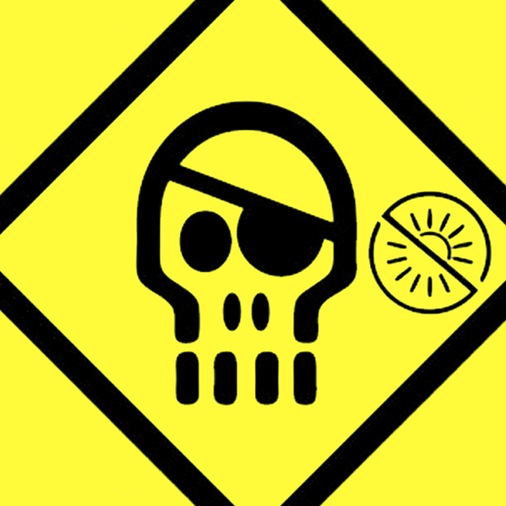Hiya, so am looking to buy more storage and while browsing am seeing some external harddisks, such as Western Digital My Book and Seagate Expansion Desktop for cheaper than the internal harddisks themselves. Have seen this one video from KTZ Systems where he bought up multiple of these external ones just to open them up and use the disks for his own server. Was therefore wondering if you peeps have ever done this and if there any downsides to it at all?
Personally I think it’s a bad idea
There’s lots of things that can go wrong and most of the time those drives are made in super controlled environments because they can be extremely sensitive. It’s just not worth the headache
It’s completely fine and was one of the most common ways to add a cheap new drive back in places like /r/datahoarder. The WD enclosures are super easy to take apart with guitar picks and old credit cards. The USB controller just slots into the SATA port and is held in place with a single Philips screw. I’ve been running these in my server since as far back as 2018 (usually adding 1-2 every year or two) without a single issue.
A lot of external drives are just internal devices with another controller and casing around. I had a 4TB I used with my laptop, and tore apart the casing and just plugged it into my desktop when I built one. Unless you start hammering the external case around, the drive will be fine.
Yes. Be aware there will be some pin blocking you need to do to make it work right because vendors know this trick.
Yeah typical :P
I have done this with dozens of drives and have never had to do any pin blocking. You only need to do that if you’re using an absolutely ancient sata power cable that doesn’t know about the spinup pin change
I had to do it with brand new psu and cables. Seasonic . So no
This has been the case since SATA revision 3.3, released Feb 2016. So while I may have exaggerated with “ancient”, a brand new PSU certainly shouldn’t still be feeding 3.3v to that pin.
Well. They do
Yup. And if you want to look up more info on how to do it correctly, look up hard drive shucking.
Thanks!
many times, shucking is a very valid way to get large format disks for cheaper than retail NAS parts. But be aware of what your buying and make sure that the disk your getting if its a white label is a reliable disk. WD Easystore/Mybook are generally good, as are the larger format Seagate external.
IMO, if you want the beast deals right now on a 12+ TB HDD, you should use serverpartdeals.com instead. I’ve got 2 manufacturer recertified 14 TB enterprise-grade drives from them and it was way cheaper than buying any 14 TB external drive.
Im based in scandinavia so wont be able to buy from there, but thanks anyway!
Hey. Heyhey. Heyheyhey. Have you ever noticed that your warships have giant barcodes on them? It’s so that when they return to port they can scan the navy in.
You might want to look up SMR vs CMR, and why it matters for NASes. The gist is that cheaper drives are SMR, which work fine mostly, but can time out during certain operations, like a ZFS rebuild after a drive failure.
Sorry don’t remember the details, just the conclusion that’s it’s safer to stay away from SMR for any kind of software RAID
EDIT: also, there was the SMR scandal a few years ago where WD quietly changed their bigger volume WD Red (“NAS”) drives to SMR without mentioning it anywhere in the speccs. Obviously a lot of people were not happy to find that their “NAS” branded hard drives were made with a technology that was not suitable for NAS workload. From memory i think it was discovered when someone investigated why their ZFS rebuild kept failing on their new drive.
i bought a few smr drives, knowing they were smr. they were cheaper, a lot cheaper than the same amount of space in cmr. used only for static media storage, so that’s not a big deal, really., but holy hell was it slow getting stuff on them initially.
i have a few self-powered externals that are also smr (quite common with those as they use 2.5in notebook hdd). when those things have to start shuffling bits around and rewriting tracks, sustained write speeds fall well under what even usb2 can send.
Yup, with 2,5" Seagates. Reused the enclosure with smaller used enterprise ssds to make cheap USB sticks.
Yes. It’s a viable way to save money if you use a site like https://shucks.top/
I thought you were talking about the platter
Be aware. Some external USB drives, like WD Elements, have built-in USB controllers. So they don’t have a SATA connector.
This must’ve changed as I’ve shucked WD Elements / Book drives and they were normal drives…
So, you’re saying the actual harddrive has a USB chipset onboard and only a USB interface?
When did this start happening?
I’ve shucked probably 100s of those WD essentials and they just had a little SATA -> USB adapter on it. It’s been a few years but it doesn’t seem like they’d make a whole new PCB just to include USB.
Within the past 2-3 years drive manufacturers have been swapping to USB PCBs directly attached to the drive controller, instead of using a SATA -> USB interface.
I think this depends on whether it’s a 3.5 or 2.5 inch drive inside. To my knowledge, all external drives with a 3.5 inch drive inside are shuckable and have a standard SATA interface. With the compact drives that have a 2.5 inch drive inside, many will have a native usb interface and no SATA connector.
It makes sense as 3.5" sata drives are used for many many applications so why make something new just for external drives? With 2.5, however there are very few devices that use spinning sata drives in this form factor. It makes a lot more sense to build the USB interface directly on the drive since their main and possibly only application is external drives.
I could be wrong, but this has been my experience.
Good to know! thanks
Acronyms, initialisms, abbreviations, contractions, and other phrases which expand to something larger, that I’ve seen in this thread:
Fewer Letters More Letters NAS Network-Attached Storage RAID Redundant Array of Independent Disks for mass storage SATA Serial AT Attachment interface for mass storage ZFS Solaris/Linux filesystem focusing on data integrity
4 acronyms in this thread; the most compressed thread commented on today has 14 acronyms.
[Thread #769 for this sub, first seen 28th May 2024, 15:55] [FAQ] [Full list] [Contact] [Source code]
Yup. /r/Datahoarder guided me right. Got two of the recommended model of MyBook and shucked them. This was 2-3 years ago. Disks are still going strong in my NAS.
I haven’t bought them specifically for that, but I have harvested drives from them. A lot of times, you’ll have to destroy the enclosure to get to the drive. If you’re ok with that, go for it.
I’ve shucked a few drives in the past but when there was a big sale on hard drives awhile back I finished decking my NAS out with 8TB drives that weren’t shucked as they came out to be cheaper than the ones in enclosures at the time.
The main downside is warranty really and some of the drives from enclosures need to have the power blocked on one of the pins to work (can’t remember which sorry) due to the type of drive they are.
after doing it for a few drives and observing the failure rates of said drives i just buy drives with warranties now. i’ve got a few shucked drives still kicking around though.












